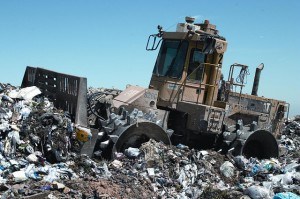Lets work together



Suite 3A, Chapel Allerton House, 114 Harrogate Road, Leeds, LS7 4NY
ukinfo@integrated-skills.com
+44 (0) 3300 888 670

 An Introduction to Landfill Gas Extraction Processes and Uses
An Introduction to Landfill Gas Extraction Processes and UsesAs the materials in landfills decompose, methane gas is emitted. This gas can be captured and isolated to be used in electricity generation via gas turbines, or for heat via the use of steam boilers.
UK landfills contain incredibly large amounts of gas that can be used for energy. In 2012, landfill gas was able to generate over 5100 Gigawatts per hour of electricity from an estimated 334,000 tonnes of captured methane. And as technology continues to advance, so increases the available amount of gas able to be reclaimed from landfills.
The Basic Process of Gas Extraction from Landfills
The extraction of landfill gas begins with the drilling of boreholes into waste after it has been deposited at a landfill site and then applying negative suction pressure. This can also be done during the depositing of waste via storing wells which hold the gas.
Pipe Network
Once either of these steps is complete, it is time to construct a network of pipes for the extraction of gas. Built into the landfill’s capping, this network of pipes leads to a manifold that connects to the gas processing system.
The construction of the pipework must be done carefully, as blockages can occur where pipes travel through low points containing water build-up. In order to work properly, low points must occur at suitable intervals, with the installation of knock-out pots, which are essentially water traps which allow for the draining of condensation without pressure loss in the pipe.
Blower and Generator
The blower is responsible for the suction which exists at the pipe network’s inlet, as well as for sending gas to the plant. The blower only feeds gas of adequate quality into the generator. The generator’s engine is similar to that of a diesel engine and is based on internal combustion. The electric power the generator produces enters the power grid via synchronisation equipment which matches the current of electricity from the generator into that which is used by the grid.
Heat Delivery Methods
The delivery route and method for generated gas depends on the proximity of the energy user to the landfill site. If they are located close to a landfill, then gas can be pumped to the factory before being burned by the user.
CHP
The heat produced by power generation activities can also be used for something called district heating. Otherwise knows as CHP, this type of heating sees low-grade heat energy from the generator’s cooling jacket being used by factories as well as homes. The piping for this type of heat delivery is laid in a district or town and accepts any unwanted hot water from the energy plant. The flow is then directed through radiators to produce the heat used by connected factories and homes.
Sometimes when there is not enough methane present in the concentration of landfill gas to be combusted, landfill gas is sent to a flare where it is simply burned off. However, this is a rare occurrence. As well it can be corrected by the technician operating this part of the system. All they need to do is throttle back the flow of gas extracted, or re-balance the valves on the collection system so that there isn’t any excess air being allowed to enter the system.
This process involves a high risk for corrosion, because of the impurities in oxygen mixing with warm to hot gas. However, much has been done in recent years to improve resistance to corrosion. However, the conversion of landfill gas to energy is considered to be both a profitable endeavour, but also a very environmentally-friendly one, as it produces renewable energy.
This technology is being deployed outside of the UK too.
Would you like to know more about Landfill Gas Extraction?? Fill in your details below and let us know how we can help.
Website Designed & Built by we are CODA